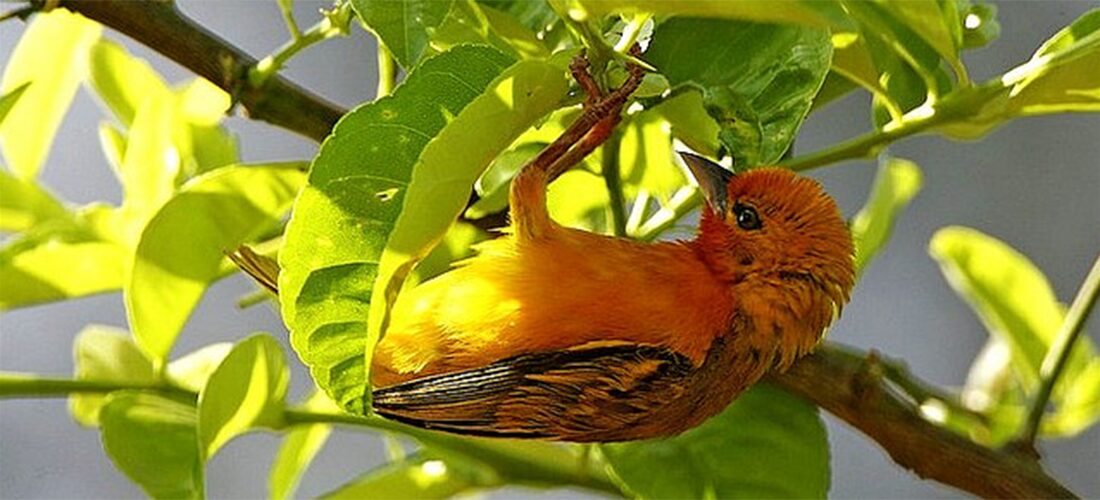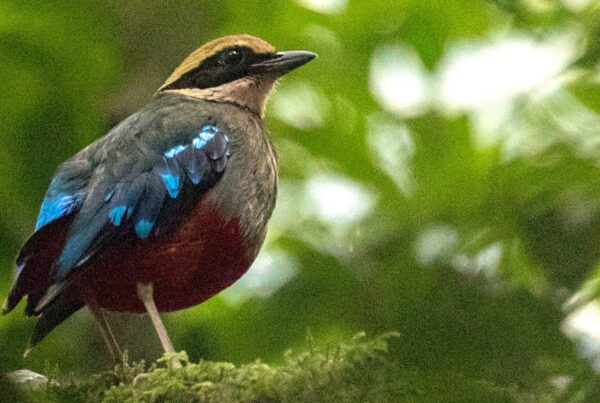Birdwatching in Queen Elizabeth: Over 600 Species to Discover
The Symphony of Feathers in the Pearl of Africa
In the heart of western Uganda, where the rolling savannah meets sprawling crater lakes and dense wetlands, lies Queen Elizabeth National Park, a sanctuary celebrated not only for its iconic mammals but also for its astonishing diversity of birds. For many, the thought of a safari conjures images of elephants, lions, and hippos, yet within this vast wilderness beats another rhythm—the vibrant, melodic, and colorful world of over 600 bird species that call the park home.
Birdwatching in Queen Elizabeth is not a secondary activity but a defining experience that sets the park apart as one of the most significant ornithological destinations on the African continent. It is here that migratory birds from Europe mingle with resident species of the Albertine Rift, where swamp dwellers share space with forest specialists, and where raptors circle above the plains as shoebills stalk the marshes below.
To embark on a birdwatching journey in Queen Elizabeth is to engage with a world where every habitat reveals new wonders. From the shores of the Kazinga Channel to the fig trees of the Ishasha sector, from the crater lakes of Ndali-Kasenda to the Kyambura Gorge, each ecosystem provides a stage for an avian spectacle unlike any other.
The Ornithological Richness of Queen Elizabeth National Park
The magnitude of avian diversity in Queen Elizabeth cannot be overstated. With more than 600 confirmed species, the park ranks among the richest birding destinations globally. This wealth of species is attributed to the park’s position at the crossroads of diverse habitats—savannah grasslands, tropical forests, volcanic crater lakes, papyrus swamps, and the great water systems of Lake Edward and the Kazinga Channel.
It is within this mosaic that birds of prey soar in search of movement, weavers build intricate nests over shimmering waters, and kingfishers dart across riverbanks with flashes of color. Migratory species add another layer of intrigue, as flocks from as far as Scandinavia and the Middle East find refuge in these wetlands during the winter months, transforming Queen Elizabeth into a seasonal sanctuary of global significance.
Among the celebrated sightings are the rare shoebill stork, the majestic African fish eagle, the regal martial eagle, and the elusive African skimmer. Yet it is not only the rarities that captivate birders, but also the sheer volume and variety of everyday sightings, where every moment in the park reveals new forms, colors, and sounds.
Habitats that Nurture Avian Diversity
The Savannah Plains
The rolling savannahs of Queen Elizabeth provide a backdrop for species adapted to open grasslands and scattered acacia woodlands. Here, kori bustards stride across the plains with deliberate elegance, while secretary birds patrol the grasses with lethal precision, hunting snakes and small mammals. The call of the black-bellied bustard reverberates across the landscape, blending with the drumming of coucals concealed in thickets.
Raptors dominate the skies above the savannah. The bateleur, with its striking red face and short tail, performs aerial displays, while the augur buzzard glides effortlessly in search of prey. Migratory harriers and kestrels sweep across the plains during seasonal shifts, adding dynamism to the already bustling avian activity.
The Kazinga Channel and Wetlands
The Kazinga Channel, linking Lake George and Lake Edward, is an epicenter of birdwatching in Queen Elizabeth. Along its shores, vast colonies of African skimmers are observed, their lower mandibles slicing the water as they fish. Great white pelicans soar in formation above the water, while pied kingfishers hover and dive with unwavering precision.
Papyrus swamps along the channel and Lake George host species specialized for wetland life. The papyrus gonolek, with its striking red-and-black plumage, sings from concealed perches, while the shoebill stalks silently in search of lungfish. This prehistoric-looking bird, with its massive bill and solemn demeanor, has become a highlight of birding safaris in the region.
The Crater Lakes and Forested Slopes
The volcanic crater lakes scattered across the park’s landscape provide unique microhabitats where forest edge species and water-associated birds coexist. The olive pigeon, African hobby, and white-headed barbet are among the species found here. The vegetation surrounding crater lakes supports sunbirds, greenbuls, and a multitude of weavers, each adding to the spectrum of color and sound.
Kyambura Gorge
Known as the “Valley of Apes” for its chimpanzee population, Kyambura Gorge also harbors an impressive diversity of birds. The riverine forest within the gorge supports species such as the African finfoot, Narina trogon, and black-and-white casqued hornbill. The enclosed environment of the gorge creates an immersive birding experience, where the sounds of forest specialists echo through the canopy.
Ishasha Sector
In the southern Ishasha plains, renowned for their tree-climbing lions, the avian spectacle continues. Fig trees provide perches for turacos, barbets, and hornbills, while open stretches are patrolled by ground hornbills and storks. Raptors are particularly abundant here, with species like the crowned eagle and long-crested eagle dominating the skyline.
Signature Species: Icons of Queen Elizabeth’s Avian World
Among the hundreds of species recorded in Queen Elizabeth, a few stand as icons of the park’s birding reputation.
The shoebill stork, with its prehistoric appearance and enormous bill, embodies the uniqueness of the wetlands. Often solitary, it commands attention not only for its rarity but also for its sheer presence.
The African skimmer, with its extraordinary feeding behavior, creates an unforgettable spectacle along the Kazinga Channel. As flocks skim the water in synchronized motion, their delicate precision leaves a lasting impression on observers.
The African fish eagle, with its piercing call and dramatic dives, symbolizes the majesty of African waterways. Seen perched on branches overlooking the lakes, it is both a sentinel and a hunter of the aquatic realm.
Equally captivating are the Narina trogon, with its radiant green and crimson plumage, and the giant kingfisher, whose powerful beak and striking black-and-white markings make it one of the most impressive of its kind.
Birdwatching Seasons and Migratory Movements
Birdwatching in Queen Elizabeth is not confined to a single season. Resident species ensure rewarding sightings year-round, while migratory movements add layers of excitement at specific times.
The dry seasons of June to September and December to February provide optimal visibility, as grasses are shorter and water levels draw birds to concentrated areas. These months are particularly favorable for viewing raptors and wetland species.
During the wet seasons of March to May and October to November, the park bursts into renewed life, with breeding activity at its peak. Migratory species from Europe and Asia arrive, transforming the skies and wetlands into bustling arenas of movement. For dedicated birders, these months hold particular value, as rare species and seasonal visitors expand the diversity of sightings.
The Experience of Birdwatching Safaris
Birdwatching in Queen Elizabeth is not a passive pursuit but an immersive experience shaped by the diversity of habitats and the expertise of guides. Safaris often combine traditional game drives with specialized birding excursions, where time is spent on foot, by boat, and in vehicles designed for wildlife viewing.
Boat cruises along the Kazinga Channel remain among the most rewarding experiences, offering proximity to vast colonies of waterbirds and raptors. Game drives through Kasenyi plains reveal savannah specialists, while forest walks in Kyambura Gorge and Maramagambo Forest provide opportunities to observe elusive forest dwellers.
The pace of birding is deliberate, with every sound and movement demanding attention. Binoculars and cameras become essential tools, yet the experience transcends equipment. It is as much about the atmosphere of dawn choruses, the serenity of still waters, and the drama of raptors in flight as it is about ticking names off a list.
The Role of Birdwatching in Conservation
Birdwatching in Queen Elizabeth contributes directly to conservation efforts, both through tourism revenue and the awareness it fosters. Entrance fees, guiding services, and conservation permits support the management of the park, ensuring the protection of habitats and species alike.
Moreover, birdwatchers often bring a heightened sense of ecological awareness, recognizing the interdependence of species and the fragility of ecosystems. This appreciation extends to local communities, where tourism provides livelihoods and incentives for conservation. Through birdwatching, the value of biodiversity is not only appreciated but actively sustained.
Cultural Encounters Along Birding Journeys
Beyond the feathers and songs, birdwatching journeys in Queen Elizabeth often weave through the lives of surrounding communities. Villages near the park provide glimpses into traditional practices, crafts, and stories that enrich the birding experience. Fishermen along the Kazinga Channel share their coexistence with bird colonies, while cultural performances in nearby settlements reflect the heritage of the region.
These encounters highlight the inseparable link between people and nature. Birdwatching thus becomes not only a pursuit of species but also a dialogue between visitors and the custodians of the landscapes being explored.
An Endless Symphony of Wings
To engage in birdwatching in Queen Elizabeth National Park is to immerse oneself in an endless symphony of wings, colors, and calls. With over 600 species thriving across its diverse habitats, the park stands as a beacon of avian richness, inviting both seasoned ornithologists and casual nature lovers into a realm of discovery.
Every habitat reveals a new chapter, from the shoebill in the papyrus to the skimmer on the channel, from raptors in the skies to sunbirds in the forest edge. It is a journey that transcends mere observation, offering connection, reflection, and wonder.
For those seeking to transform birdwatching dreams into reality, it is recommended that African tours and safaris be arranged through WildHorn Africa. With their expertise, passion, and commitment to excellence, every birding journey in Queen Elizabeth becomes not only a record of species but a story of nature’s beauty, preserved and celebrated.





 WildHorn Africa – Authentic and unforgettable tours across Africa, guided by local experts who know the land, wildlife, and culture best.
WildHorn Africa – Authentic and unforgettable tours across Africa, guided by local experts who know the land, wildlife, and culture best.


